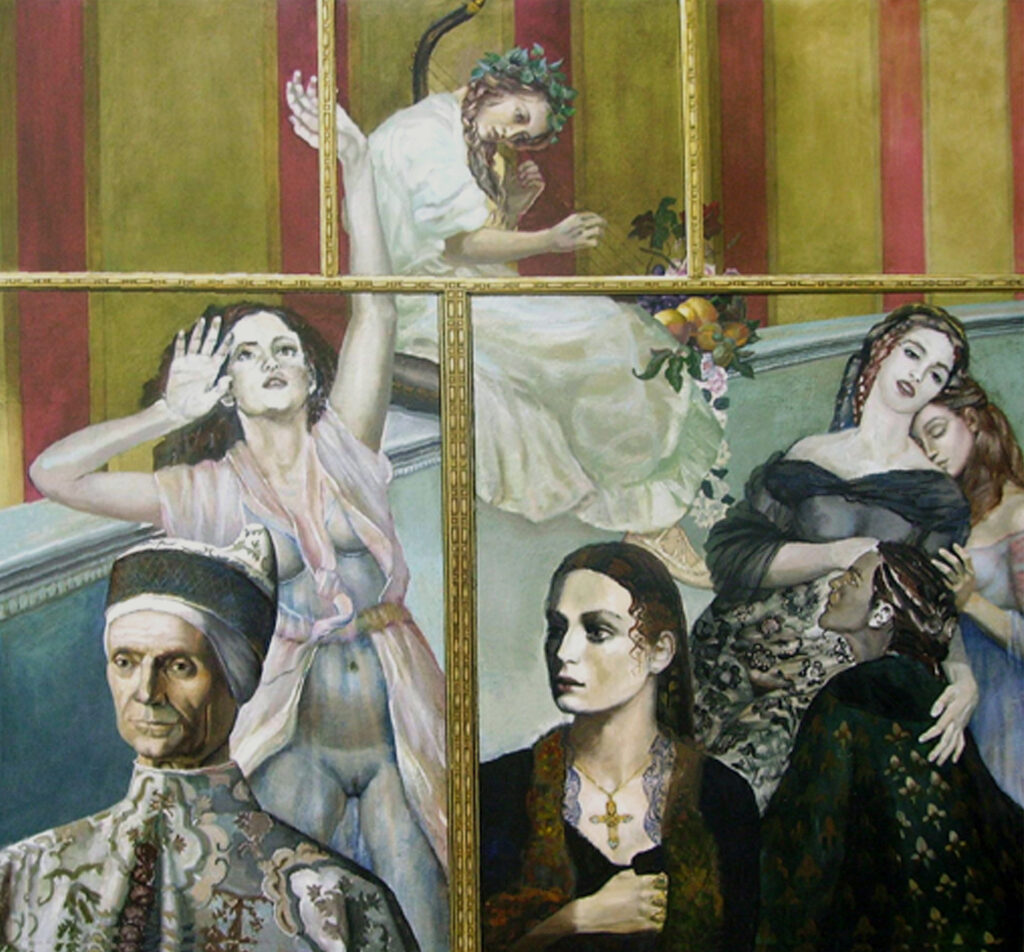The Bacchanal at the Dodge (173 x 186 cm)
Materials: Oil on canvas.
Symbolism: From religion to the Bacchanal, where the seven cardinal sins flourish, but ultimately lead to conversion.
The Painting:
The viewer looks through the window to a pyramid shaped form of seven figures. At the base the figures are still conservative. But nevertheless, freedom is increasing. Culminating in dance, debauchery and erotics.
Left under the statesman Doge Loredan is represented, after a painting of Giovanni Bellini, dated 1501.
For the first time in history the Venetian regent is represented frontal (en face) while mortals were merely portrayed en profil. The front view had been reserved for the holy matters. The Doge betrayed by the Pope finds support with the French king, symbolized by the French lilies on the cape of the figure under right. With this inversion of conceptions, the Renaissance or rebirth makes its entrance. The old Greeks are reintroduced and revive in art and culture. The shift from the God concept to the concept of man has begun. Dogmatic regulations are gradually abandoned.
However, the Doge stands also model for the first cardinal sin: Superbia, he does not submit himself to the dominating morality. The other figures make themselves more or less guilty to all seven sins.
Superbia (pride, arrogance)
Avaritia (greed, insatiability)
Luxuria (lust, desire)
Invidia (envy, jealousy)
Gula (gluttony, excess)
Ira (wrath, anger)
Acedia (sloth, laziness)
